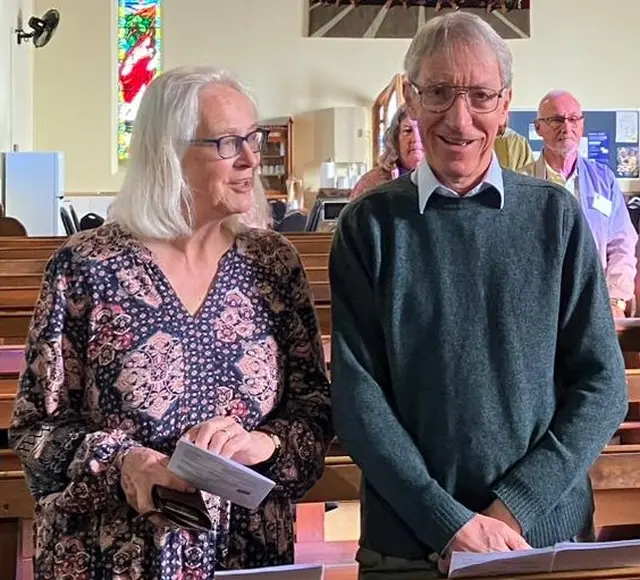Our Worship
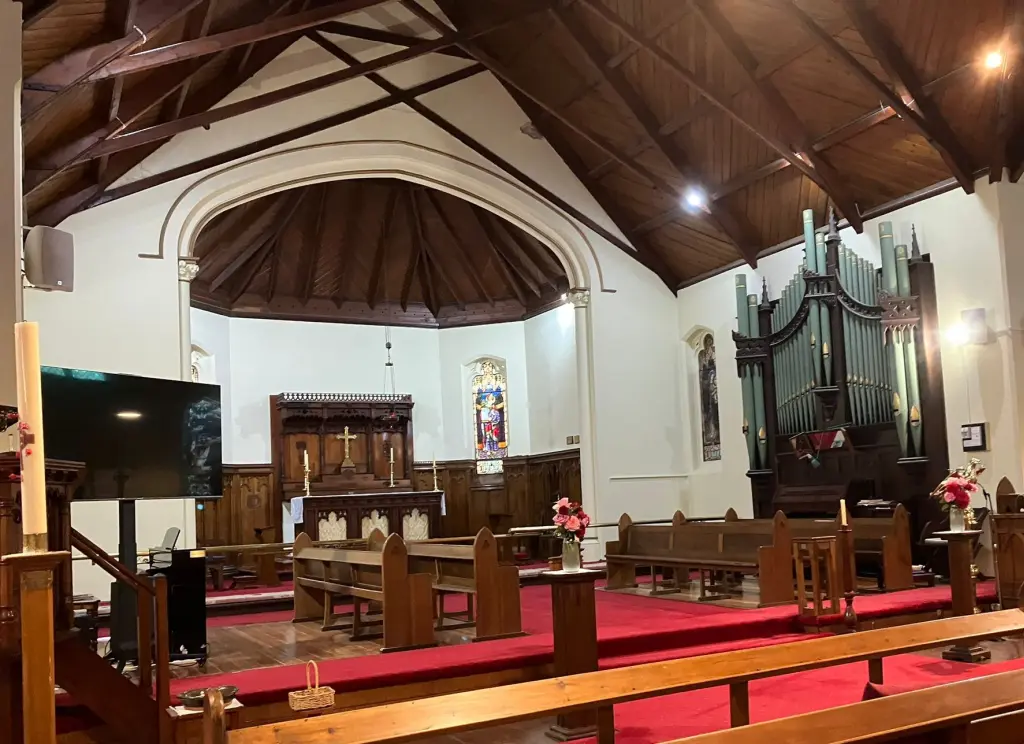
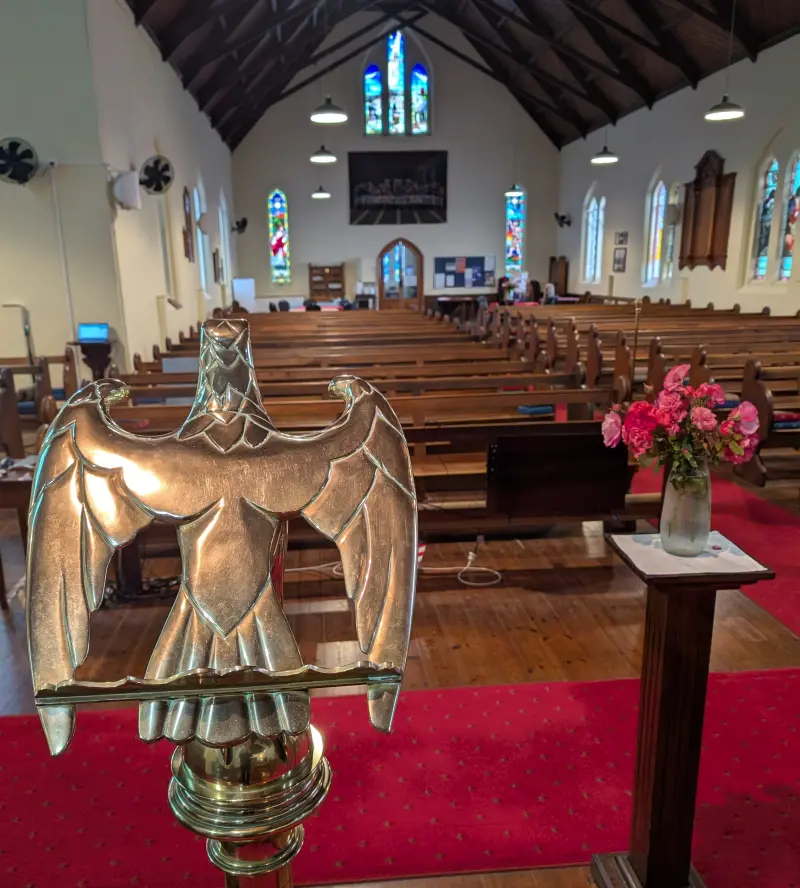

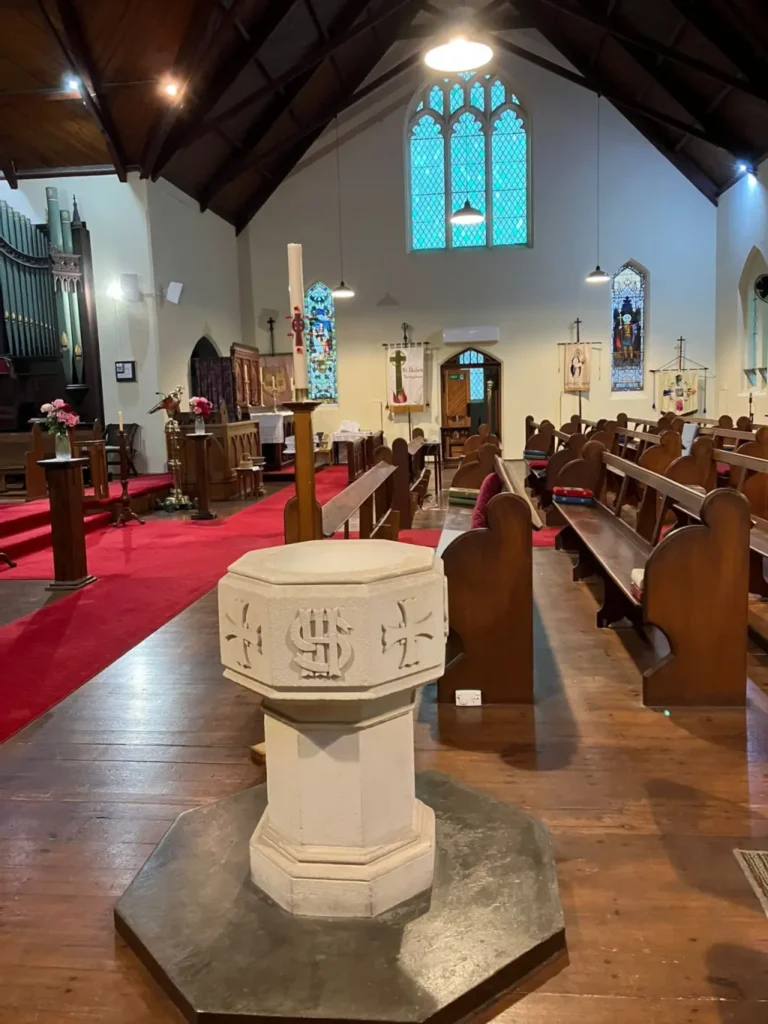
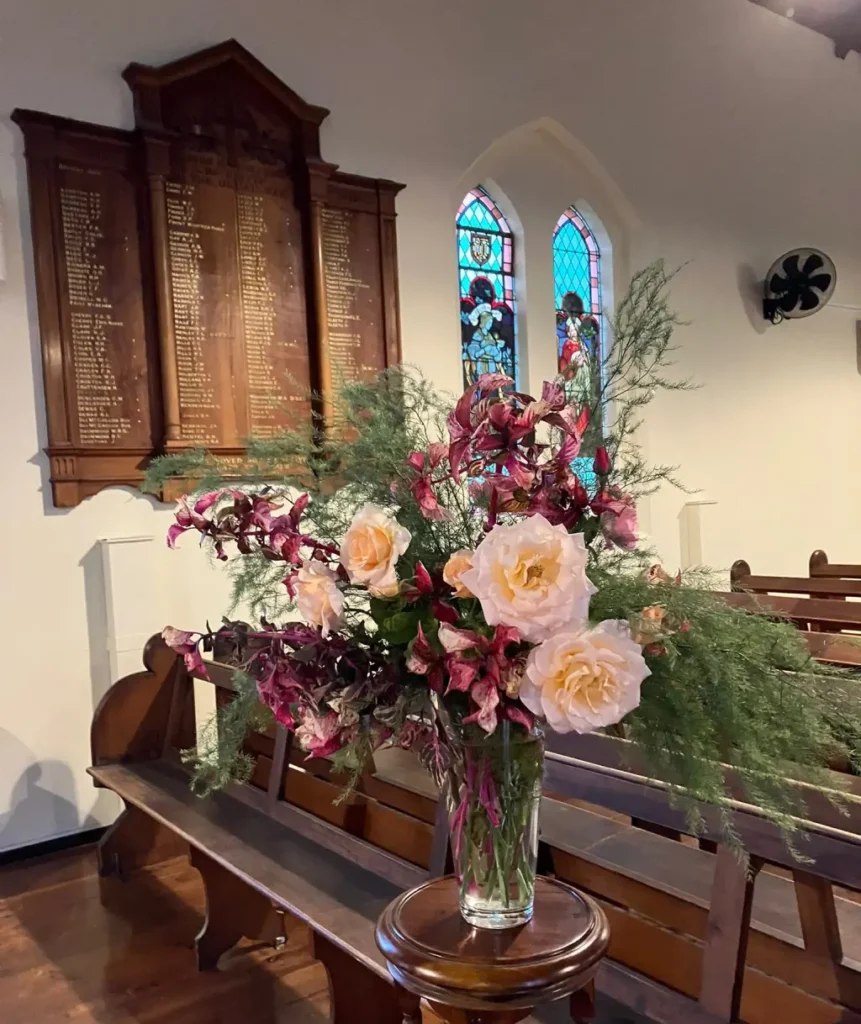
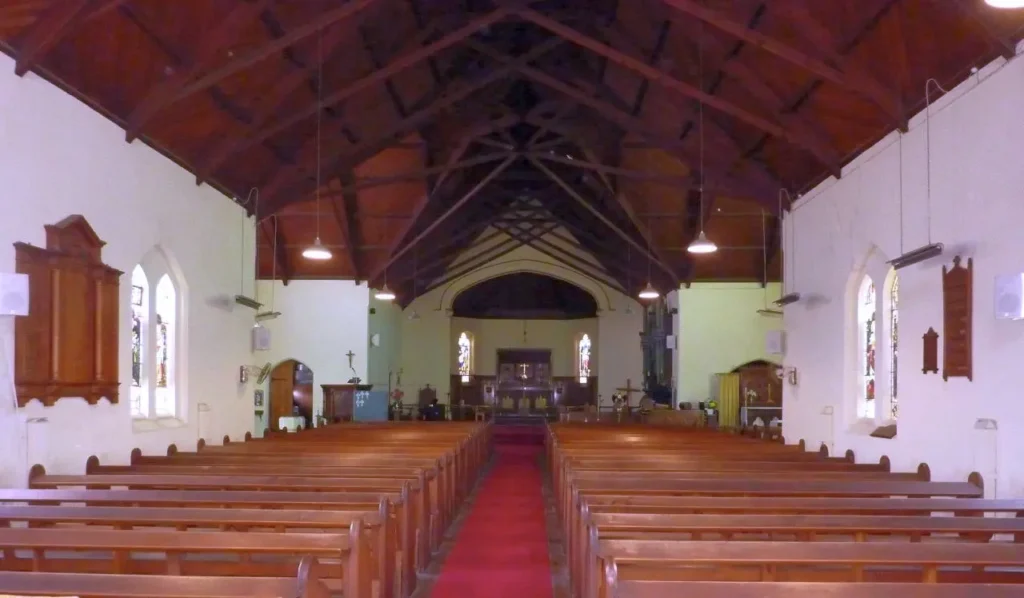

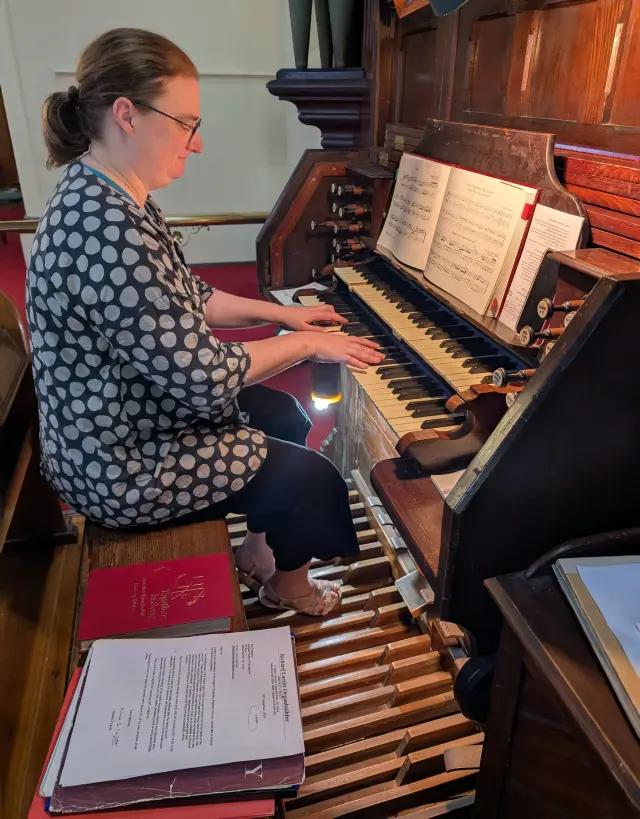
Background
The worship of God is at the centre of what we do and who we are at St. Bede’s. The Scriptures remind us that from the earliest times, when God reveals himself to his people, he calls them to worship. “Take off your shoes,” God says to Moses from the burning bush – directing Moses to perform a simple but profound act of worship.
The style and content of the services at St. Bede’s is shaped by the ancient experience of the church and by the present realities of the world. Holy Eucharist has been the principal act of Christian worship, in some form or another, since the days of the early church when the apostles followed Jesus’ instructions to break bread and share wine in remembrance of him. So this service of praise and thanksgiving is at the very centre of our common life at St. Bede’s as it is throughout the Church at large.
In the Eucharist we are invited into the mystery of God’s love: that God gave his Son to live and die for the salvation of the world and sent his Holy Spirit to enable, empower, and enliven us in the work of building up his kingdom. When we bring offerings of praise and thanksgiving to Eucharist – in prayer and song, bread and wine, and in our gifts of money – we pray that God strengthens us to follow the most basic commandment: to love him and to love our neighbors as ourselves.
We celebrate Eucharist with various degrees of ceremony and solemnity. Sunday, the Lord’s Day, sees the richest celebration of the Eucharist. This designation means that the Eucharist is celebrated with ceremony and music – choosing to sing things whenever possible, with the conviction of St. Augustine that to sing is to “pray twice.”
Throughout the week, a less elaborate version of the Eucharist is celebrated, traditionally referred to as “Low Eucharist.”
We still observe many ancient and medieval customs as we conduct the ceremonies of the church. Although the liturgies are full of words, they are also made up of actions. Sometimes these ceremonial actions reinforce what we are saying, and sometimes they speak for themselves, saying things for which we have no words. Words and actions are both symbolic – representing our offering of ourselves, our lives and our faith to God.
In the Anglican Church we are blessed with a rich heritage of language and ritual that has also benefitted from a measure of renewal. At St. Bede’s we use a variety of forms and styles of ritual, most of which come from A Prayer Book for Australia 1995. We enjoy singing hymns from Together in Song 1999.
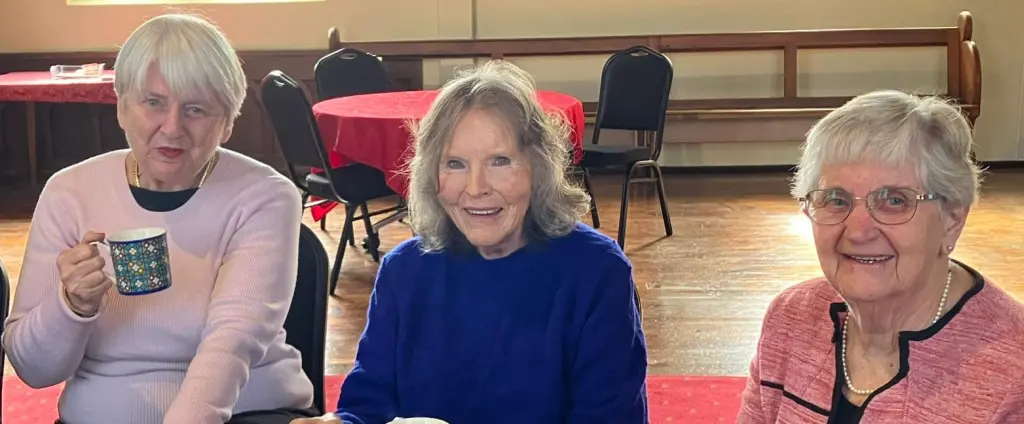
A Guide to Symbolism in Worship
Water
Water is the symbol of Baptism, the Sacrament by which people are made Christians and are initiated into the household of God in Jesus Christ.
The Font
The Font is filled with water whenever there are Baptisms.
Sign of the Cross
The Sign of the Cross is frequently made in one way or another in the liturgy. It is traditionally made with the fingertips of the right hand, tracing the shape of a Cross over one’s body by touching first the forehead, then the breast, then left shoulder and finally the right shoulder – the four points of a Cross. When we do this we silently affirm our faith in Jesus, whose death on the Cross was the decisive act of God’s salvation of humanity.
You will often see a priest make the Sign of the Cross over something – the offering plates, the bread and the wine of Communion, and over the People of God in the final Blessing at every Eucharist. In this way, we symbolize our prayer that God will bless that which is indicated by the action. At the announcement of the proclamation of the Gospel, many people make the Sign of the Cross in a very specific way: by using the thumb of the right hand to trace a very small cross over forehead, lips and heart. This action embodies a prayer that we may embrace the message of the Gospel with our minds, proclaim it with our lips and believe it deeply in our hearts.
Bowing
Bowing is a gesture of reverence. Most often we use a simple bow, which is just a slight, forward inclination of the head, to show our reverence for God. It’s customary to bow when walking past an altar, or when the Cross is carried by in procession. Many people bow their heads at the mention of the name of Jesus – not as proof that they are especially religious, but as an act of reverence toward the One who gave his life for the salvation of the world.
The Sanctuary Lamp
The Sanctuary Lamp is the large lamp that stands behind the Altar. Its white candle burning indicates that the Blessed Sacrament is in its usual place and represents to us the presence of our Lord Jesus in our midst.
The Altar
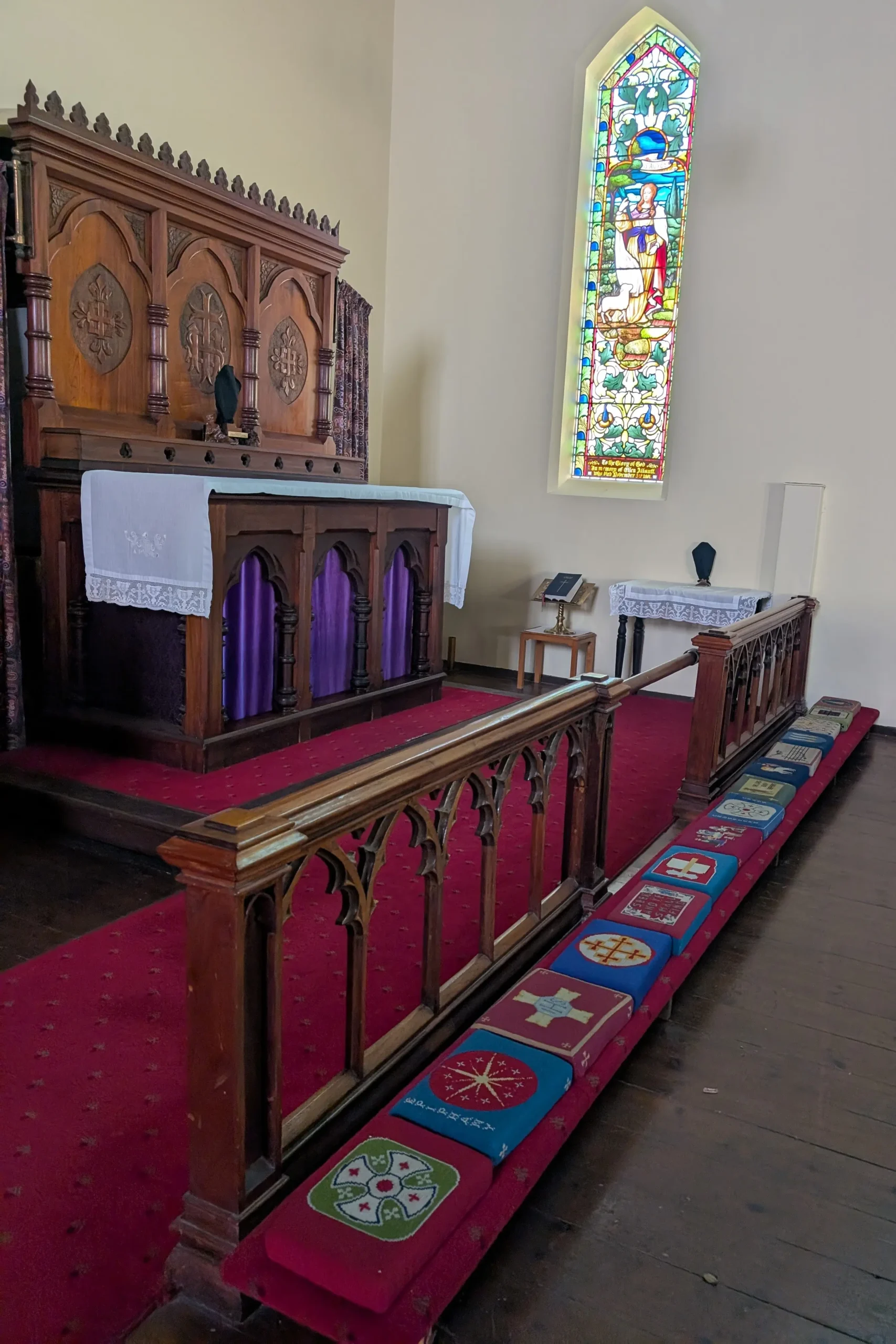
The Altar is not only the table on which the celebration of this Eucharist takes place; it is a symbol with many dimensions of meaning, for it is the place where we remember the act of perfect love of Christ’s offering of himself for the sake of the world. The altar is inscribed with crosses, which suggests that the altar itself symbolizes Christ’s body and his presence among us. It is when we gather at the altar in our worship that Jesus forms us – and the whole church – into his Body. The Altar is most often covered (vested) with a cloth of suitable dignity in a color that signifies the season of the church year. You will see that special care is taken with how we act at the altar, and with sacred vessels that are placed on it.
Candles
Candles always represent God’s presence among us, and particularly remind us that Christ’s living presence with us brings light to the world. Candles are always lit on the Altar for just this reason (since we no longer rely on them to see!). A special candle, called the Paschal Candle, is lit at the Great Vigil of Easter and burns in a place of honor for the 40 days from Easter to the Ascension, reminding us that by his resurrection Christ assured us that light would always overcome darkness. At other times of the year the Paschal Candle remains near the Font and is lit for Baptisms.
Processions
Processions take place in the church from time to time, especially on major feast days. A procession is an act of worship because it gives us an opportunity to raise our voices in song, to pray as we stop along the way, and to remember that God calls all his people to be pilgrims: people who have someplace to go and something to do.
Vestments
Vestments are worn by many of the people – both clergy and lay – who have particular roles in the liturgy of the day. We wear vestments as we seek to draw closer to the presence of God, and because every celebration of the Eucharist is a feast and worthy of the time and effort it takes to get dressed up. We put on our best for God.
The Eucharist
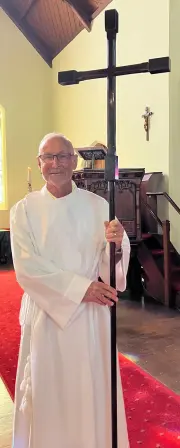
The Prayer Book instructs us that the Holy Eucharist is to be “the principal act of worship on the Lord’s Day and other major Feasts.” It is the practice that most clearly defines who we are as a Christian community.
In the Eucharist we are first and foremost worshiping God – entering into his holy Presence, since our Lord promised that wherever two or three are gathered together in his Name he would be in the midst of us – and offering our prayers and praises. The Eucharist is always an act of thanksgiving (this is what the word “eucharist” means), and we rejoice to define our lives by this daily act of thanksgiving. In the Eucharist we also have the opportunity to hear Holy Scripture, to pray for the needs of the church, the world, ourselves, and those we love, to experience God’s forgiveness and healing, and to enjoy communion with the living Lord as we receive the Sacrament of his Body and Blood.
We believe that the risen and glorified Christ is really present with us in the sacramental forms of Bread and Wine, which are mysteriously transformed into his Body and Blood. The significance of the mystery is that Jesus makes his self-giving love known to us and to the world – and has for centuries – by being among us in this way.
We are a community of faith that aspires to be open to the mysteries of God. We find that God reveals himself to his people – but does so shrouded in mystery. Our worship acknowledges that God remains mysterious to us even in his love for us. At the heart of the Eucharist is the mystery of how and why Jesus’ suffering, death, and resurrection have brought God’s people into a new, restored relationship with him, and have given us hope for grace and blessings in this life, and in the life that is to come beyond the grave.
All baptized Christians are welcome to receive communion at any celebration of the Eucharist at St. Bede’s, and persons of any faith or no faith at all are always welcome to participate with us, and to come to the altar rail for a blessing as they feel God urge them on their way.
Baptism
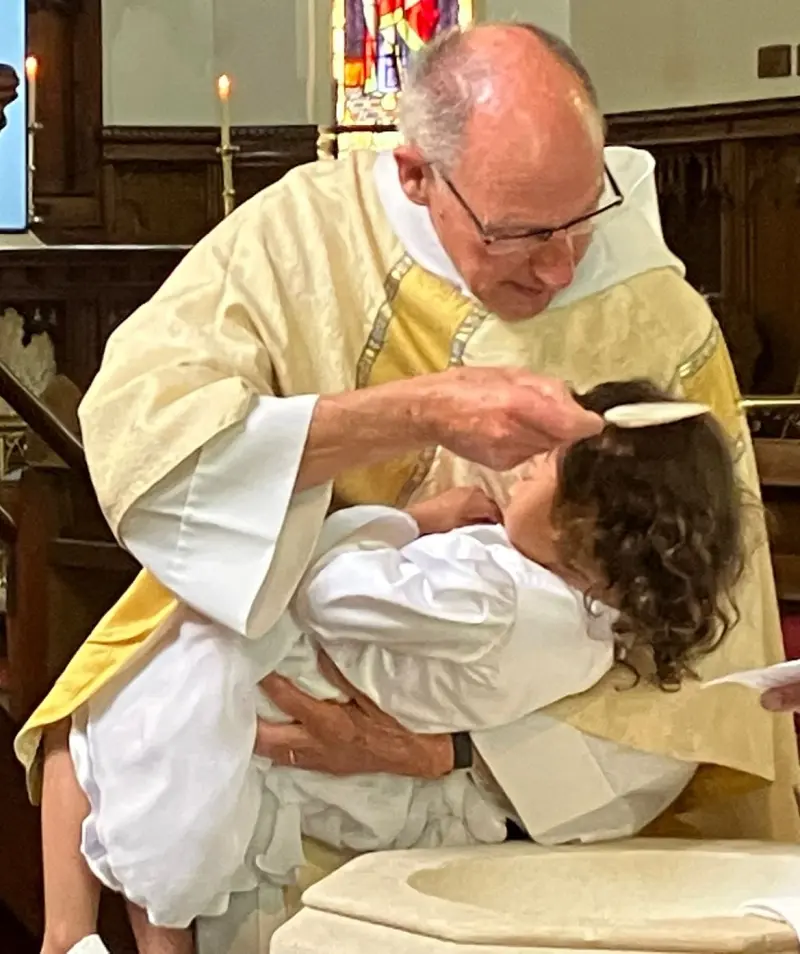
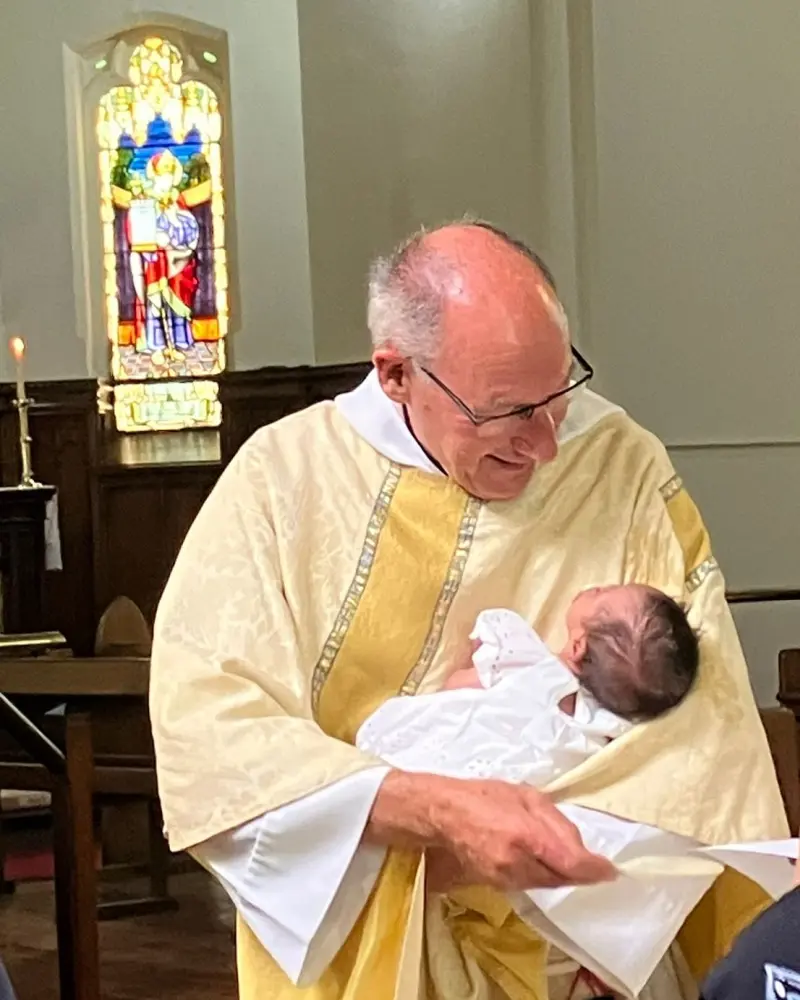
Saint Paul loved to speak and write about the people of the early churches as members of the Body of Christ. He used the metaphor to emphasize the importance of the diversity of parts as well as their unity. He (and those he taught) was very clear about how to become a part of that body: by the gift of Baptism.
Baptism is a Sacrament of the Church, which means that it is a ritual act, using a specific, outward and visible sign to show us the inward, invisible gift of God’s love, which we call “grace.” We use this special word to describe God’s love because we know that, especially in the world today, we can confuse “love” with romance, responsibility, fascination and a lot of other things. But God’s grace is perfect, unconditional love, which is poured out on us whether we deserve it or not, whether we earn it or not, just because “God is love.”
We believe that God calls all people, by his grace, to love him and to love one another. In Baptism, we are initiated into the household of that love, so that we never have to wonder whether or not we are a part of the Body of Christ. If we have been baptized, the answer is, Yes.
Baptism is also the sign of new life that is given to members of the Body. It is the assurance that our tendency to make mistakes, to hurt one another, and to fall short of God’s highest expectations for us – all of which the church has traditionally called “sin” – will not prevent God from loving us and bringing us to the promise of salvation and the hope of new life in the world to come. We don’t know what happens to us after death; we believe that life is not ended at the grave; it is changed. At the other side of the mysterious and frightening chasm of death, God waits with promises of good things we cannot even imagine in this life. Baptism is the seal of assurance that these promises are meant for us.
When we have been baptized we recognize that we have entered into a covenant with God: a special relationship in which God makes promises to us (to love us and to give us the gift of new life) and we make promises to him (to be faithful by doing our best to love God and to love our neighbors as ourselves).
Infant Baptism

At St. Bede’s we welcome infants (and children of any age) to receive the Sacrament of Baptism. We don’t hesitate to baptize infants and children too young to make the vows for themselves because we recognize that the Sacrament is first and foremost a gift from God. A child is no less able to receive that gift than an adult. In these cases, parents and godparents make the vows on behalf of the child. It’s expected that when a child reaches an appropriate age, he or she will make a public affirmation of those vows in the service of Confirmation.
Adult Baptism
Baptism is always available to adults who have not previously been baptized and whose growing faith has led them to a desire to share in the life of the Body of Christ. The church always rejoices when new members are added to the Body of Christ.
Anyone wishing to be baptized or to have their children baptized should contact the parish priest.
Christians believe that the suffering, death and resurrection of Jesus are the decisive acts of God’s love that show us God’s promise of hope. What Jesus did to bring us new life he did once and for all – Baptism is the beginning of our participation in that new life. All mainstream Christian denominations recognize the validity of baptism with water in the Name of the Father and of the Son and of the Holy Spirit. If one has been baptized it is never necessary to be baptized again.
When children or adults are baptized, this makes them Christians, not a particular brand or kind of Christian. It is in Confirmation that we ally ourselves with a particular denomination. While some people may decide to change denominations, this is done by Confirmation or Reception into the church. Re-baptism is never required or appropriate.
Baptism and Eucharist
In Baptism we are made full members of Christ’s Body, the church. As full members, all baptized Christians (regardless of age) are welcome to receive the Sacrament of Christ’s Body and Blood in the Eucharist, the Holy Eucharist.
Public and Private Baptisms
The church welcomes the inclusion of Holy Baptism as part of her public rites. Baptisms only take place during the Sunday liturgies at St. Bede’s. Public Baptism is always appropriate at the Great Vigil of Easter, the beautiful night-time service that ushers in the greatest feast of the church year, when the whole church renews the vows made in Baptism. Certain other times of the year also present especially appropriate times to include Baptism as part of the Eucharist.
Baptisms always take place around the font. Whenever possible we try to schedule such baptism to take place before or after a normally scheduled celebration of the Eucharist, the other great Sacrament of God’s grace.
Godparents
Godparents are sponsors of a child who is presented for Baptism. They make the vows on the child’s behalf, along with the parents, and must, therefore, be baptized themselves. Parents often ask special friends or family members to serve as godparents. Traditionally, boys have two godfathers and one godmother and girls have two godmothers and one godfather. This decision is entirely at the discretion of the parents.
To find out more about Baptism at St. Bede’s, please contact the parish priest.
Weddings
Marriage in the church is a Sacrament – that is, the ceremony is an outward sign of the invisible work God accomplishes in joining two human lives together in one common bond. We rejoice to be the ministers of this Sacrament when two people seek to join their lives together in love, and in God’s Name.
Who may be married at St. Bede’s?
Couples seeking to be married should first contact the parish priest to arrange for an introductory meeting. The point of this meeting is so that the priest may learn something about the couple’s background and expectations and the couple may learn about the parish’s expectations. If it seems agreeable to both the couple and the priest, preparations and planning for the wedding will proceed.
What kind of preparation is required?
The priest is required to ensure that “both parties have been instructed as to the nature, meaning and purpose of Holy Matrimony.” At St. Bede’s we generally try to accomplish this preparation in discussions that take place between the couple being married and the priest performing the ceremony. Normally, three hours of preparation is required (i.e. three separate one-hour sessions). These discussions would normally cover topics ranging from the church’s theology of marriage to specific arrangements for the wedding ceremony. The discussions are meant also to provide the priest an opportunity to get to know a couple (and vice versa) and to assess their readiness to enter into a life-long covenant. This requires a measure of openness and self-disclosure on the part of the couple, as well as fairness and discretion on the part of the priest.
The clergy retain the right to decline to perform any marriage as a matter of personal judgment and discretion.
May a divorced person be married at St. Bede’s?
The policies of the Anglican Church allow for the marriage of a divorced person. As a part of the preparation for marriage the priest will inquire about previous marriages and the circumstances that resulted in divorce.
How do we plan the wedding ceremony?
Wedding ceremonies at St. Bede’s must conform to the regular pattern of the church’s worship as laid out in A Prayer Book for Australia and its supplements. The somewhat traditional structure of the marriage rite laid out there allows for some significant variation, which must all be discussed with the priest performing the ceremony. The priest is required to use the vows as they are set out in the Prayer Book and does not have discretion to allow the couple to write their own vows. The priest will work with the couple to help select readings and make other choices about the service.
May we have a Eucharist as part of the wedding ceremony?
There are generally two kinds of wedding ceremonies:
- The Marriage Office is a short service (about 25 minutes, usually with music) that includes a procession, readings, prayers, a homily, the exchange of vows and rings, and a blessing of the marriage.
- The Nuptial Eucharist includes everything in the Wedding Office and then continues with a celebration of the Eucharist, offered in thanksgiving for the couple’s marriage.
At St. Bede’s we are happy to perform either kind of wedding ceremony. Since the Eucharist is the principle act of Christian worship, offered every Sunday at St. Bede’s, and one of the chief Sacraments of God’s love and grace for his people, and since it is always an offering of praise and thanksgiving from God’s people, it is almost always appropriate to include a celebration of the Eucharist with the Marriage rite, but it is not required. The priest will discuss this matter with the couple during the course of preparation.
Other Details
Flowers & Decorations
Flowers and other adornments are placed in the church as offerings to God in thanksgiving for the marriage of two people. Generally speaking elaborate displays of flowers are unnecessary in such a beautiful church and are discouraged. We don’t encourage the use of aisle runners, which seldom add to the dignity and beauty of the space. The marriage rite does not include or allow for the lighting of a unity candle. We have well-established relationships with several area florists whose use we recommend. Before contracting with a florist other than those we recommend please be in contact with the parish office.
Rehearsal
A wedding rehearsal, lasting about one hour, conducted by the officiating priest is normally held on the evening before the wedding.
Photography
In order to ensure the dignity of the ceremony we ask photographers and videographers to respect some limits, remaining discreet and unobtrusive. This generally means that they should remain in the side aisles or at the back of the church except during the procession, when photographers may be in the centre aisle. We request the photographers not take flash photos during the ceremony. If you desire time in the church before or after the ceremony for picture-taking, please be sure to arrange this time in advance with the parish office.
Funerals
It is true, as the Prayer Book says, that “the liturgy for the dead is an Easter liturgy. It finds its meaning in the resurrection.” The Prayer Book also reminds us that “the very love we have for each other in Christ brings deep sorrow when we are parted by death.” The liturgy itself includes these words: “All of us go down to the dust; yet even at the grave we make our song: Alleluia, alleluia, alleluia.”
- The death of a member of the Church should be reported as soon as possible to, and arrangements for the funeral should be made in consultation with, the priest.
- Baptized Christians are properly buried from the church. The service should be held at a time when the congregation has opportunity to be present.
- The coffin is to be closed before the service, and it remains closed thereafter. It is appropriate that it be covered with a pall or other suitable covering.
- If necessary, or if desired, all or part of the service of Committal may be said in the church. If preferred, the Committal service may take place before the service in the church. It may also be used prior to cremation.
- A priest presides at the service.
A Prayer before Worship
O Almighty God, who poured out on all who desire it the spirit of grace and supplication: Deliver us, when we draw near to you, from coldness of heart and wanderings of mind, that with steadfast thoughts and kindled affections we may worship you in spirit and in truth; through Jesus Christ our Lord. Amen.
